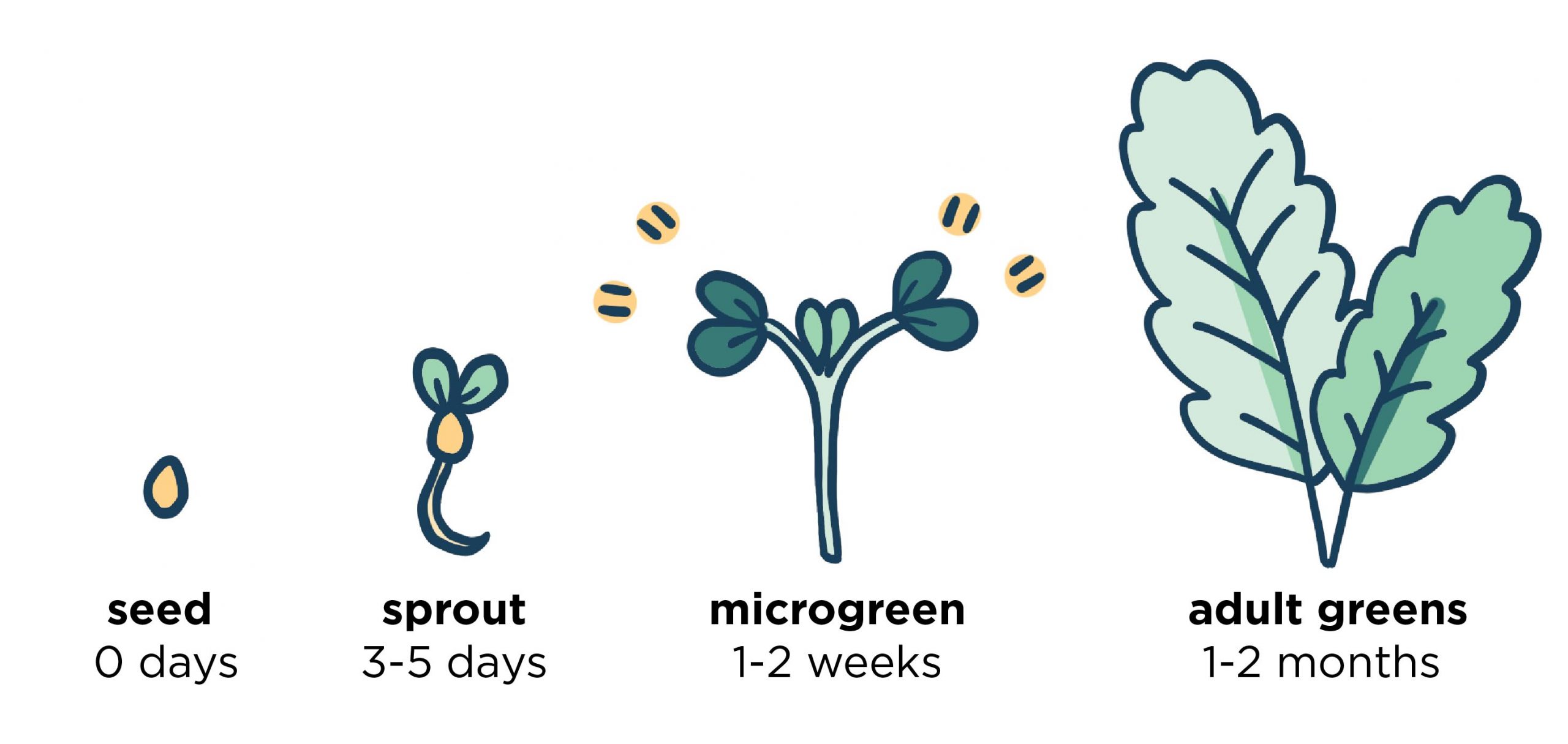Products
We are not certified, organic growers but we grow our microgreens in an organic way! Our growing method is considered organic because we don’t use any pesticides, or soil that might be contaminated. Plus we only use Organic, Non-GMO seeds. So it’s as close to organic as you can possibly get.

Depending on the stage of development of an edible plant we give it a different name. Sometimes we eat them as seeds (grains), some as right after they germinate (sprouts), and if we let them grow a little longer they become microgreens. Microgreens are typically harvested after they have formed a pair of starter leaves, though sometimes they’ve also just started to put out their “adult” leaves. Another term you’ll see for them is “shoots” – which basically translates to “large microgreen” and is used for plants where the seedlings are larger, like peas and beans.
Microgreens are young vegetable greens that are approximate 3 inches (2.5-7.5 cm) tall. They have an aromatic flavor and concentrated nutrient content and come in a variety of colors and textures (1). Microgreens are considered baby plants, falling somewhere between a sprout and baby green.
Microgreens can play a role in both sweet and savory dishes. In addition to their nutritional value, they can add flavor, texture, and color to salads and sandwiches. People can also add them to smoothies or use them as a garnish.
Some of these greens do very well when they are cooked… Microgreens can be a perfect addition to stir fry dishes like this one from Genius Kitchen. They also do well in other dishes like this pasta recipe with fresh spring veggies, and pancetta if you aren’t a vegetarian.
They may be tiny, but a new study shows trendy microgreens punch well above their weight when it comes to nutrition. Researchers found microgreens like red cabbage, cilantro, and radish contain up to 40 times higher levels of vital nutrients than their mature counterparts.
Pea shoots: All microgreens are positively packed with vitamins, and pea shoots are no exception. Their nutrition values include beta-carotene – which our bodies convert into vitamin A, vitamin C, folate-which is an essential building block for the human body and fiber.
Radish: Radish microgreens are some seriously powerful little greens. Not only do they contain vitamins A, B, C, E, and K, they also deliver calcium iron, magnesium, phosphorus, potassium, and zinc. But that’s not all. Radish is rich in essential amino acids and chlorophyll which has all sorts of benefits from cancer-fighting properties to digestive aid.
Sunflower Shoots: Much like their other microgreen friends, sunflower shoots have an impressive nutrition profile. First of all, they are a complete plant protein. Sunflower shoots contain all of the essential amino acids as well as iron, potassium, magnesium, calcium, copper, and phosphorous. They are particularly high in zinc which has all manner of benefits including a boost to the immune system and digestive regularity. As if all this weren’t enough to I have you already soaking your seeds, sunflower shoots also deliver vitamins A, B complex, D, and E.
Broccoli: Broccoli microgreens have a higher amount of sulforaphane, promote cardiovascular health, anticancer potential, support healthy aging, reduces symptoms of autism, promote digestive health, boost brain function, good for the respiratory system, and the skin, anti-inflammatory, lots of proteins and antioxidants.
Arugula: Nutrient-rich and low in calories – just 20 calories in about three cups – provides an excellent source of folate, vitamins A and C, and over 100% of your daily vitamin K needs. This same serving supplies a good source of calcium, magnesium, and manganese.

